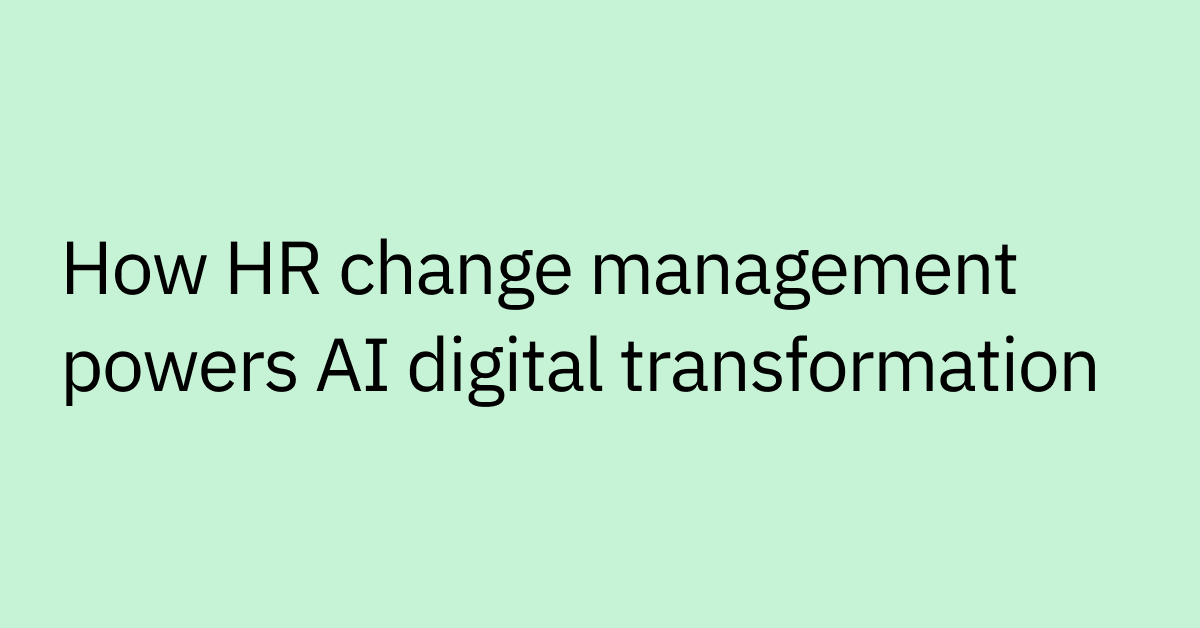Table of contents
Highlights
- AI agents reduce manual effort by reasoning across HR, IT, and finance workflows.
- Benefits include faster decision-making, improved compliance, and better employee experience.
- Use cases span onboarding, expense processing, workforce planning, and anomaly detection.
- AI marketplaces make it possible to adopt prebuilt Workday-compatible agents without custom development.
Every day, employees waste hours wrestling with menus and manual handoffs just to complete simple tasks—like booking PTO or submitting an expense. The stakes are high: every unnecessary click slows down your teams and drives up operational cost.
Employees shouldn't need to navigate multiple systems just to request time off or check their benefits status. HR teams shouldn't spend hours answering the same questions about PTO policies. And your finance operations shouldn't grind to a halt waiting for manual approvals on routine expense reports.
Workday is rapidly expanding its agentic AI capabilities, having announced plans to acquire Sana Labs, purchasing Flowise to bring powerful AI agent builder capabilities to the platform, and introducing Workday Data Cloud to unlock the power of people and money data. According to the organization, its current 13 AI agents are just the beginning, too, with more anticipated to be released in the next year.
But what if you need broader automation or expanded agentic abilities right now?
What if your employees work across multiple HRIS systems, or need AI that extends beyond HR and finance into IT, facilities, and other business functions?
An agentic AI layer, comprised of intelligent agents capable of autonomous decision-making, learning, and executing complex tasks across enterprise systems, can turn Workday into an even more intelligent, dynamic platform.
What agentic AI adds to the Workday system
Agentic AI agents are part of autonomous systems powered by large language models (LLMs) that can interpret context, make decisions, and take multi-step actions across your enterprise systems. While traditional automation follows rigid rules or can be cumbersome to build and maintain, AI agents are designed to understand context, dynamically adapt to exceptions, and complete entire workflows minimal human intervention.
Here's how agentic AI can rev up Workday functionas:
- Cross-system execution: Agents can extend Workday actions into other platforms like Slack, Microsoft Teams, and ServiceNow, creating a better employee experience across your entire tech stack. For example, instead of the employee manually filing a PTO request, they could use an AI agent to do it for them.
- Contextual reasoning: AI agents can go beyond simple routing rules to interpret policy nuance and understand what employees actually need, even when they don't phrase requests perfectly.
- Real-time responsiveness: Instead of following predetermined paths, agents are able to adjust to exceptions or changes mid-process, handling edge cases that would typically require manual intervention.
- Conversational access: AI assistants that use AI agents let employees interact with agents naturally through chat, asking questions in plain language rather than navigating complex menus or remembering where specific forms live.
Workday's AI agents can handle important functions within the platform, but enterprises rarely operate in silos. Your employees likely need support that connects IT, facilities, procurement, supply chain, and other systems. Not just HR and finance.
See what’s possible by exploring 10 Workday process automation examples that drive real impact.
Benefits of augmenting Workday with agentic AI
Adding an agentic layer to your Workday environment can deliver measurable improvements across several key areas:
- Efficiency: Reduce the time your teams spend on manual approvals, data entry, and repetitive policy checks. AI agents can handle routine requests instantly, freeing your HR and finance pros up to focus on higher-value work.
- Accuracy: Minimize manual errors as agents are able to apply policies consistently across interactions, reducing the risk of oversight, human error, or incorrect information.
- Employee experience: Eliminate friction when requesting time off, managing expenses, or navigating onboarding. Employees are able to get instant answers and complete tasks without waiting in ticket queues for simple questions or requests.
- Scalability: Handle growing case volumes without proportionally increasing headcount. As your organization expands, AI agents can scale with you to support more employees across more locations.
- Visibility: Surface insights and recommendations proactively, instead of waiting for quarterly reports. Through this transparency, leaders can gain a real-time understanding of where processes actually work well and where improvements are needed.
The impact shows up quickly. Organizations that implement agentic AI for HR and finance operations often report seeing dramatic reductions in resolution times and support ticket volumes within the first few months. Databricks offers just one example of this, with other companies also seeing plenty of benefits from agentic AI.
Use cases: How agentic AI powers Workday
When embedded into an AI assistant or workflow, AI agents can turn theoretical capabilities into practical, everyday support across your most common Workday workflows.
- Onboarding and offboarding: Trigger provisioning, training enrollment, and benefits selection automatically. Agents can orchestrate the entire employee lifecycle, keeping things from falling through the cracks during transitions.
- Expense and payroll: Scan receipts, detect anomalies, and auto-populate expense reports. Agents can identify potential policy violations before submissions reach approvers, reducing the need for back-and-forth communication.
- Recruiting: Adding an agentic layer to talent recruitment can help reduce pain points (like manual back-and-forth communications) and accelerate time-to-hire. Deploy agents that can grade resumes, look up candidate status, submit interview feedback, and, as the hiring manager, retrieve interview feedback from the hiring panel. This means less time chasing updates and more time making informed hiring decisions.
- Workforce planning: Analyze skills gaps, forecast staffing needs, renew contracts, and suggest career development paths based on organizational goals and individual employee profiles.
- Policy compliance: Monitor activity against HR and finance rules in real time, such as time off requests being bumped up against PTO balances. Agents can escalate exceptions to the appropriate team members while handling standard requests autonomously.
These aren't hypothetical scenarios. They're actual processes Workday already supports, with agents being the cog in the machine that removes the manual labor and potential frustrations that slow them down.
Building these types of custom automations or AI agents from scratch can take significant development resources and time. However, enterprise platforms recognize the need for faster deployment. Select no-code or low-code AI agent builders and platforms to accelerate time to value.
Deploy fast with 100+ pre-built Workday AI agents
Both Workday's marketplace and platforms like Moveworks have invested heavily in making pre-built agents readily available. Moveworks expands this capability to 100+ prebuilt Workday AI agents, which employees can access from Slack, Microsoft Teams, web browser, or Google Chat.
When embedded into an AI assistant or workflow, AI agents can turn theoretical capabilities into practical, everyday support across your most common Workday workflows.
AI agent marketplaces can provide curated catalogs of pre-built, platform-compatible agents that can dramatically reduce implementation complexity:
- Reduced development overhead: Deploy vetted and tested agent templates instead of building every workflow from scratch.
- Enterprise-grade security: Access agents built to support security and compliance standards, with adjustable permission controls and other capabilities to align with your needs.
- Faster time-to-value: Move from concept to production in weeks rather than months through plug-and-play functionality.
This helps to turn any Workday environment into a dynamic employee support platform that joins together workflows across HR, IT, and finance while maintaining enterprise-grade security and compliance.
Overcoming common challenges with agentic AI in Workday
While agentic AI offers plenty of benefits, its successful implementation requires addressing several considerations to prevent creating more problems.
Ensuring data security and privacy
Responsible AI governance emphasizes robust data protection. Effective frameworks typically include role-based permissions to help control access to sensitive HR and finance data. Organizations often implement encryption and audit trails to support compliance with GDPR and similar data protection requirements. Centralized oversight can help monitor agent access and maintain detailed activity logs, with accountability remaining a central focus of any AI management approach
Making legacy systems compatible
Prioritize solutions that connect Workday with your older HR and finance systems without requiring full platform replacements. Look for tools that extend Workday capabilities into the platforms your employees already use daily, like ServiceNow or Microsoft Teams. Start with one or two high-impact workflows to prove value before expanding across the rest of your organization.
Driving organizational adoption
For the best results, prioritize regularly updating and meticulously labeling your company knowledge with proper formatting and context tags to continuously refine agents' understanding and accuracy.
- Make AI agents available where employees already work, directly in Slack, Microsoft Teams, web browser, or Google Chat.
- Show what’s possible with self-service support and help your team think of AI as a tool that enhances their work and alleviates manual, repetitive tasks.
- Listen to employee feedback and refine how agents respond so your people experience tangible improvements that make their jobs easier.
Learn how to build your own AI adoption strategy for successful integration.
Measuring adoption and engagement
Watch how often employees use agents compared to submitting traditional tickets or calling the help desk. Pay attention to which types of requests get the most agent activity, as these will reveal your highest-value automation opportunities. Survey employees about their experiences with agents to gauge satisfaction, but be sure to aim for realistic goals.
Moveworks unlocks Workday's full potential
While Workday provides a strong foundation for HR and finance operations, your employees need help across IT, facilities, procurement, and other functions, as well.
Moveworks' agentic AI Assistant can enable users to update their profile details, surface pay statements and benefits eligibility, calculate PTO and submit requests, generate onboarding checklists, complete steps across systems, and more. The upshot is consistent support that doesn’t require employees to know which system or team handles their request.
Moveworks works with many HR systems, including Workday, and connects them with the rest of your enterprise tools. The platform links Workday with ServiceNow, Slack, Microsoft 365 Copilot, Salesforce, and hundreds of other systems to provide:
- One place for all requests: Employees are able to ask questions and get help through a single interface, whether they need HR support from Workday, IT help, or facilities assistance.
- Automatic routing behind the scenes: Agents can handle requests across multiple systems without employees needing to understand which app does what.
- Smart request interpretation: AI can understand what employees actually need, even when they phrase requests casually, and connect them with the right agent or person.
With Moveworks’ ready-to-use connections and tested frameworks, organizations can deploy a Workday agent system across their entire tech stack in weeks instead of months.
See how it all works by exploring the Moveworks Workday integration.
Frequently Asked Questions
Agentic AI refers to AI systems designed to autonomously reason, adapt, and take action with limited human intervention. Unlike chatbots, which typically follow scripts or answer questions in a narrow domain, agentic AI agents are capable of handling exceptions, making decisions, and completing multi-step workflows end-to-end.
Think of a chatbot as a digital FAQ, while an AI agent is more like a digital colleague who can proactively resolve a task, escalate when necessary, and learn from outcomes.
Workday processes that are repetitive, exception-heavy, or involve multiple systems see the greatest lift from agentic AI. Examples include:
- Onboarding and offboarding: Automatically triggering provisioning, benefits enrollment, and training
- Expense and payroll: Scanning receipts, detecting anomalies, and generating reports in minutes
- Recruiting: Sourcing candidates, screening resumes, and scheduling interviews without manual intervention
- Workforce planning: Analyzing skills gaps, forecasting staffing needs, and recommending development paths
By handling the “heavy lifting,” agents free up HR and finance teams to focus on strategic priorities.
AI marketplaces provide platform compatible, prebuilt, Workday-compatible agents that enterprises can deploy quickly. Instead of building custom agents from scratch, you can select from a catalog of vetted, secure options tailored to common HR and finance workflows. This reduces development costs, accelerates time-to-value, and ensures best practices are already baked into the agent design.
As organizations adopt AI agents in enterprise workflows, it’s increasingly important to establish structured governance models that promote responsible management. Industry best practices focus on areas such as maintaining a central record of agents, defining appropriate access permissions, monitoring activity for compliance, and managing the lifecycle of each agent as business needs evolve.
A well-designed governance framework can help organizations safeguard sensitive data, align with regulatory expectations, and build trust in AI-driven decisions.



